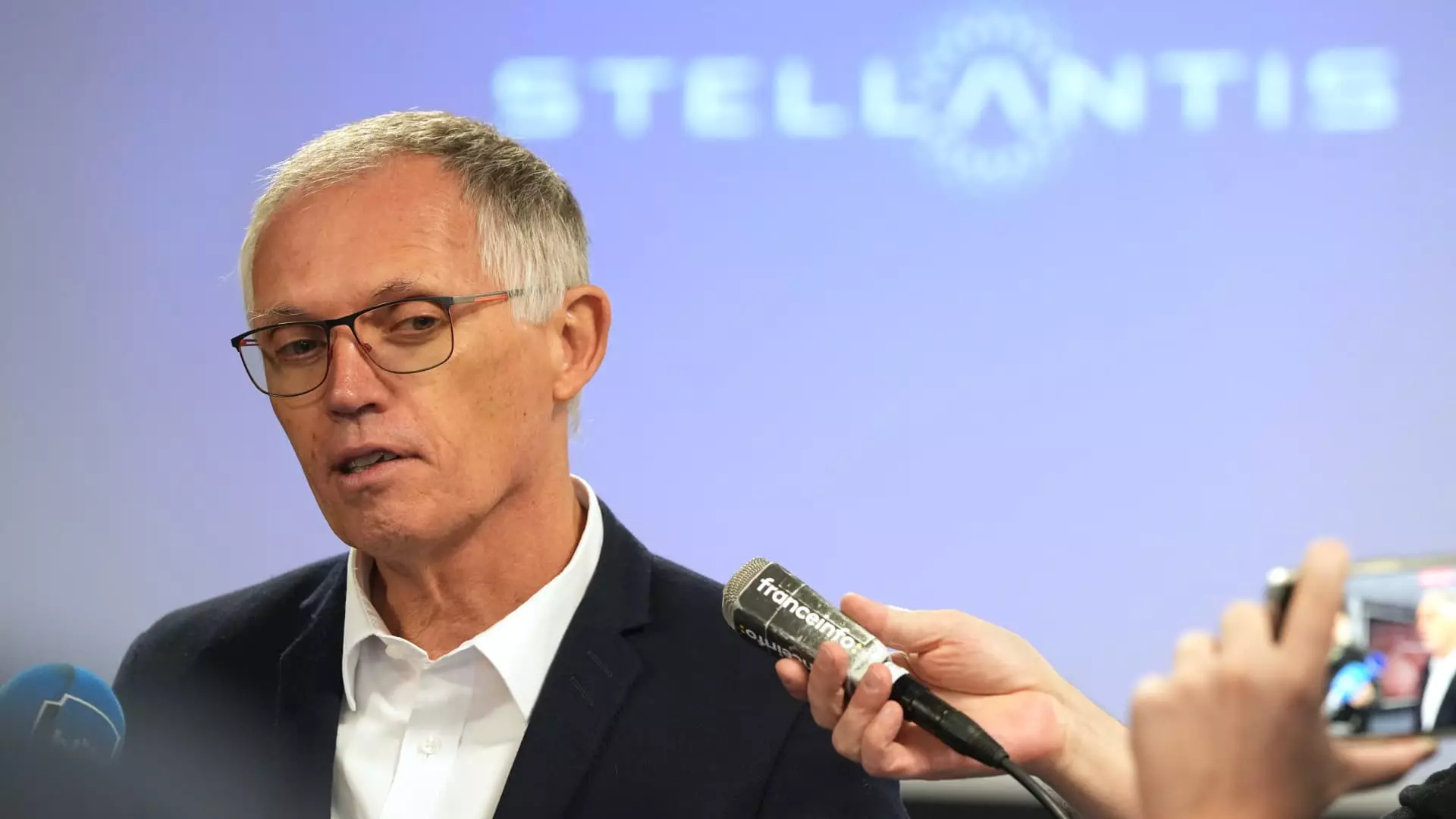The automotive industry is renowned for its volatility, and recent developments at Stellantis have underscored this reality. The board’s acceptance of Carlos Tavares’ resignation reveals not just an internal shake-up within one of the world’s largest automotive manufacturers but also a deeper story of misalignment in corporate strategies and visions that can drastically reshape the industry’s landscape.
The resignation of Carlos Tavares, effective immediately, has sent ripples throughout the automotive sector. Once a celebrated leader—especially for overseeing the successful merger of Fiat Chrysler Automobiles and PSA Groupe in 2021—Tavares has found himself at odds with Stellantis’ board of directors. This unexpected turn suggests that strategic disagreements have built up over time, leading to a critical juncture for the company. Stellantis, which operates famous brands such as Jeep, Dodge, and Peugeot, has cited “different views” as a primary reason for Tavares’ departure. Such divergences in opinion within the executive circle can often foreshadow tumultuous times ahead for both management and stakeholders.
Notably, Tavares’ exit comes at a time when Stellantis’ financial standing has raised eyebrows. Following a period of impressive profitability, the company’s recent performance has fallen short of expectations, particularly within the crucial U.S. market. Factors contributing to this downturn appear to include a miscalculation in product investments, high prices, and aggressive cost-cutting measures. This past year’s financial results prompted Stellantis to revise its annual guidance, highlighting a staggering 27% decline in net revenues for the third quarter.
In contemporary business environments, mismanagement of core markets could endanger a firm’s sustainability. As Tavares deployed extensive cost-cutting strategies, claiming upwards of $9 billion in savings, the initiatives have not contributed positively as intended. There’s a strong argument to be made that while immediate financial relief may be achieved through aggressive reductions, the long-term repercussions—decreased innovation and damaged relations with essential labor unions—could outweigh any fiscal gains.
Labor dissatisfaction has reached a boiling point under Tavares’ leadership. Reports of significant job cuts and the relocation of operations to lower-cost regions have drawn significant backlash from labor unions, particularly the United Auto Workers. Their calls for his removal indicate a growing rift between management’s cost-control ambitions and the workforce’s demands for stability. A drastic reduction in headcount of approximately 47,500 employees since late 2019 must be understood within this context. The downsizing has not only affected employee morale but also strained relationships with Stellantis’ dealership network.
Critically evaluating the impact of management decisions on company culture reveals how cost-cutting can inadvertently create a hostile working environment. When staff feel disposable due to corporate policies, productivity and innovation tend to plummet. The discontent among employees and unions signals a looming threat to Stellantis’ operational integrity and overall market position.
While Stellantis has initiated the search for a new CEO, uncertainty looms regarding the company’s strategic direction. The interim executive committee, led by Chairman John Elkann, must navigate the repercussions of these leadership changes while also addressing the significant issues that contributed to Tavares’ departure.
Looking to the future, the new leadership will need to balance financial responsibilities with the necessity of investing in fresh, innovative products and maintaining robust relations with both employees and dealers. Driving such a change will require a thoughtful approach as Stellantis aims to reshape its public image and bolster its performance—seeking not only to regain ground lost in stock value but also to reclaim its status as an industry leader.
In retrospect, Tavares’ widely acknowledged strengths as a leader now bring into focus the dual-edged nature of his approach. His capacity for financial maneuvering is evident, but the fallout from his management style underscores the complexities of steering a large auto manufacturer in an era marked by rapid technological change and heightened consumer expectations. The impending chapter for Stellantis will rely heavily on how effectively the board can align new leadership with both shareholder interests and employee satisfaction.


Leave a Reply